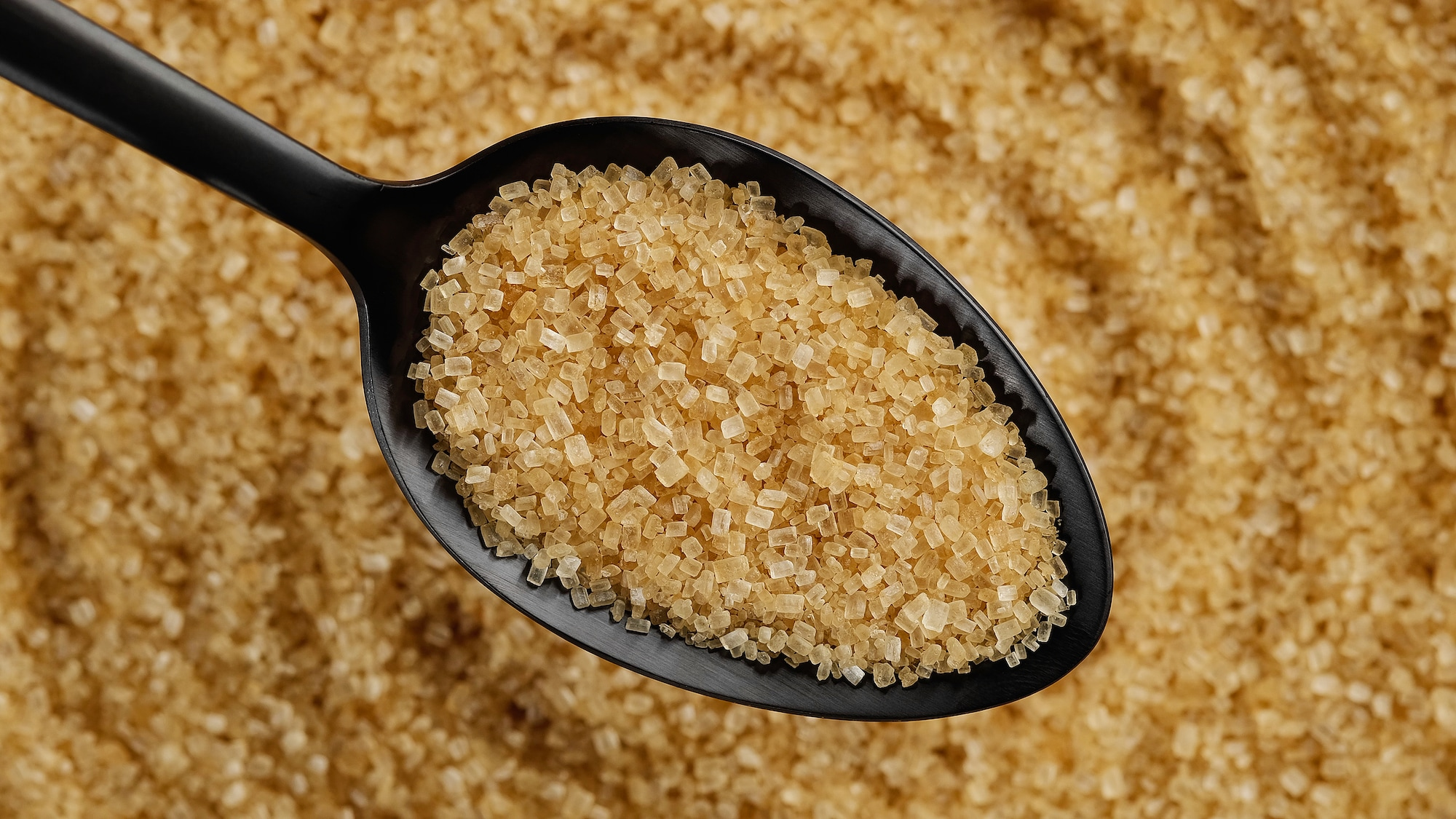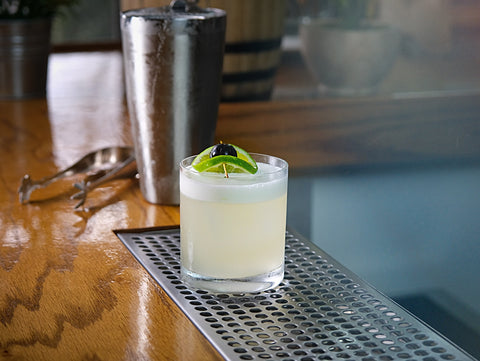From Demerara Sugar to Demerara syrup
What is demerara syrup?! Perhaps you've seen it called for in a delicious cocktail recipe, or as an upgraded sweetener for coffee beverages, but weren't sure exactly what it was. Here, we aim to offer everything you need to know about demerara syrup and how to use it to elevate your cocktails and other beverages, as well as desserts and baked goods!
TO START: Sugar refinement
The first step in understanding demerara syrup is understanding demerara sugar, and for that, you need to know the basics of sugar refinement. The process of refining sugarcane begins with the harvesting and washing of the raw sugarcane stalks.


From there, the sugarcane is crushed in order to extract the juice from the raw sugarcane stalks. This sugarcane juice contains every bit of the characteristic sugar sweetness that humans have known and loved for centuries! The crushed sugarcane and juice mixture is run through a series of mills, continually breaking down the sugarcane fibers and liquifying the mixture, extracting as much of the juice as possible while separating out the dry pulp.

Once the sugarcane is sufficiently juiced, the juice is clarified using a chemical process and clarifying tanks to help to separate any remaining fibers from the juice. This works through what is essentially a racking process, allowing the solid fibers and impurities to separate from the juice and sink to the bottom of the tank.
Once the sugarcane has been clarified, it's on to the evaporating tanks where the juice is heated and reduced, thus substantially concentrating the sugar while evaporating off extra water. The concentrated juice is then placed in yet another tank, where any remaining impurities and sediment float to the top to be skimmed away, leaving behind a thick and very concentrated sugar syrup.
Next, a mixture of sucrose and alcohol is added to the remaining syrup in order to help isolate the sugar. The syrup, alcohol, and sucrose solution is once again evaporated, leaving behind a thick crystalized paste called molasses.
The final step is to run that paste through a centrifuge, separating the sugar crystals from the rest of the paste. Pretty involved process, right? For you visual learners out there, here is a great video on sugarcane refinement from the folks at Discovery UK: How It's Made.
How Demerara Sugar is Made
"Demerara" refers to a type of sugar resulting from a process of partially refining cane sugar while retaining some of the molasses for flavor. Similar to turbinado, muscovado, Mexican piloncilo, and brown sugar, demerara sugar's flavor profile offers distinctive natural notes of caramel and toffee with a bit of earthy molasses complexity. Here at Liber, we get our demerara sugar from Malawi, a small country in southeastern Africa.

Culinarily, demerara sugar's flavor profile is exceptionally versatile, making it a very popular choice in a wide variety of cocktails, including the Old Fashioned, the Daiquiri and the Irish Coffee. It is also a popular topping in desserts, baked goods, and other food applications as a richer, more complex substitute for plain white sugar.
How to Make DEMERARA SYRUP
Demerara syrup is made by combining demerara sugar with liquid, most often water. Depending on how it's being used, the ratio of water-to-demerara sugar can be adjusted. For cocktails, we recommend utilizing a 2:1 demerara syrup, or a syrup composed of 2 parts demerara sugar to 1 part water. This demerara syrup recipe provides the highest intensity of demerara sugar flavor by volume, and means that you aren't diluting your cocktail (or other beverage) with added water as you bring it up to your preferred level of sweetness.

Simply add 2 parts by volume of granulated demerara sugar (available at most large grocery stores or health food stores, or online) to one part water in a saucepan, and gently warm over medium heat while stirring to dissolve the sugar. You should notice the mixture begin to thicken as the sugar crystals dissolve into the water and the syrup forms.
Once the demerara sugar has visibly dissolved into the water and the syrup is a uniform viscosity, remove the demerara syrup from heat and transfer it into a vessel (a glass bottle or jar ideally).
In order to maximize the lifespan of your demerara syrup, you may want to sterilize it using a hot-filling method. This added step to the process above simply requires bringing the syrup to a specified temperature (between 194 and 203 degrees Fahrenheit), and transferring it into a glass bottle or jar, sealing the container, and inverting the container so that all of the air in the vessel "passes through" the superheated demerara syrup. Importantly, in order to successfully sterilize the demerara syrup, the syrup must be held at a temperature between 194 and 203 degrees Fahrenheit for a minimum of 15 seconds.
Once sterilized (and assuming it is resealed shortly after use and returned to the refrigerator), your demerara syrup should last you a month or more.
Demerara Gum Syrup: Why we add gum arabic to our syrup

Here at Liber & Co., our Demerara Syrup utilizes gum Arabic to naturally enhance the texture of the syrup. Gum Arabic is a resin found in the Acacia tree, and has long been used in cocktails for its physical properties. It's a natural emulsifier, which allows for liquids of varying densities to be combined in a stable mixture without separating. But most importantly, it enhances the textural quality of the syrup, lending a rich and silky mouthfeel without being cloying or heavy. These qualities make gum Arabic a bit of a bartender's secret ingredient, enhancing the cocktail in subtle yet powerful ways.
Best Uses for demerara syrup?
So what are the best uses for demerara syrup? Around here, we think the top answer is in cocktails! Demerara syrup imparts a rich, complex flavor element to a wide variety of classic and novel cocktails alike that is simply unmatched by refined white sugar. Demerara syrup's profile pairs perfectly with barrel-aged spirits, rums, agave spirits, and vodka, and its flavor is extremely useful because it is both unique and versatile. Demerara syrup is the perfect sweetener in a classic Old Fashioned or Sazerac, and is also called for in countless tiki and tropical-inspired cocktail recipes (if you're a cocktail drinker, try a classic Daiquiri with Demerara Gum Syrup— I promise you won't be disappointed!).

Along with its usefulness in a near infinite variety of cocktail recipes, demerara syrup is an excellent sweetener for coffee and tea beverages. For the last decade or so, raw sugars like demerara, turbinado, and muscovado have been steadily gaining in popularity relative to refined white sugar for their more interesting flavor contributions. Demerara syrup's particular flavor profile makes it an excellent pairing with cold brew coffee or unsweetened chai tea.
Aside from being an excellent sweetener for beverages of all kinds, demerara syrup is also a great addition to desserts and baked goods, including cookies, pies, and even as a unique topping for ice cream!
Want more info on demerara syrup?
Leave us a comment below or reach out to us at info@liberandcompany.com


